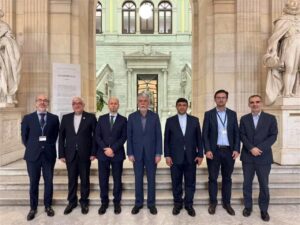Hon Lim Chin Tsong’s OBE Palace Undergoing Transformation into National Art Museum

Yangon, The Gulf Observer: The historic Hon Lim Chin Tsong’s OBE Palace in Bahan Township, Yangon Region, has been undergoing extensive renovation and maintenance since the 2022-2023 financial year, with the goal of transforming it into a national art museum. This initiative aims to preserve, collect, and exhibit artworks from across Myanmar, fostering a deeper appreciation of the nation’s artistic heritage, according to Director of the National Museum (Yangon), Daw Nan Laung Ngin.
“In 2018, at an art exhibition held at the Hon Lim Chin Tsong’s OBE Palace, prominent artists, including U Lun Gywe, proposed to the State the establishment of a large art museum within the palace to showcase Myanmar’s rich artistic diversity. Given the site’s popularity among international tourists, the proposal was well-received. Initially, large-scale renovations were scheduled to begin in the 2020-2021 financial year; however, due to the COVID-19 pandemic, the project was delayed and officially commenced in the 2022-2023 financial year,” stated Daw Nan Laung Ngin.
She further noted that only a few major renovations remain, and the museum will soon be ready for its official opening. A vast collection of art objects, including paintings and sculptures, has already been acquired, and partnerships with various art organizations are being established to expedite the museum’s launch.
The upcoming museum will feature 11 galleries on the first floor and eight galleries on the second floor. Other sections of the building will accommodate coffee shops, libraries, painting studios, meeting rooms, offices, and souvenir shops, creating a comprehensive cultural hub.
Hon Lim Chin Tsong’s OBE Palace is an architectural landmark, distinguished by its unique five-story octagonal design, which harmoniously blends European, Asian, and Chinese architectural influences. Its construction began in 1915 and was completed in 1917. Once fully operational, the museum is expected to become a vital institution for Myanmar’s artistic and cultural preservation while serving as a significant attraction for both local and international visitors.


